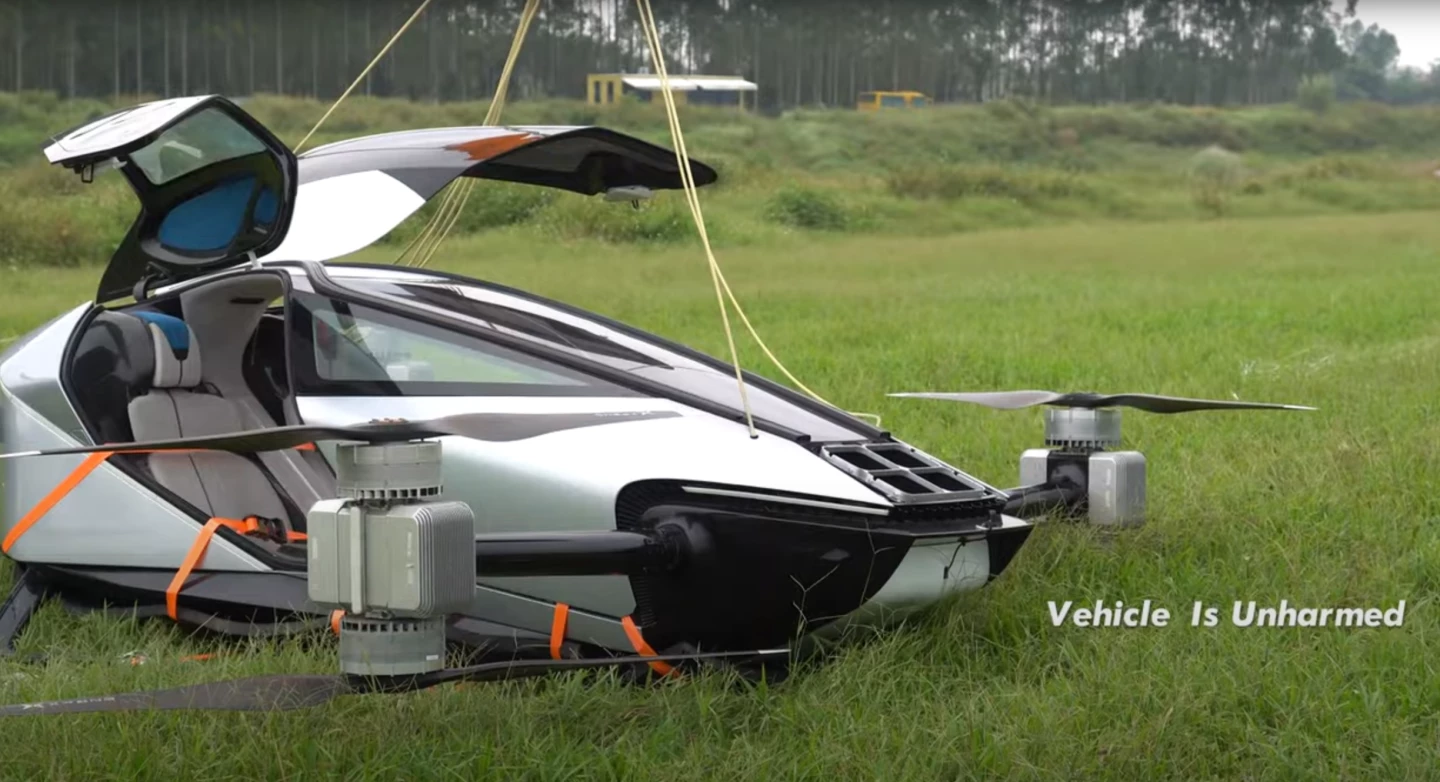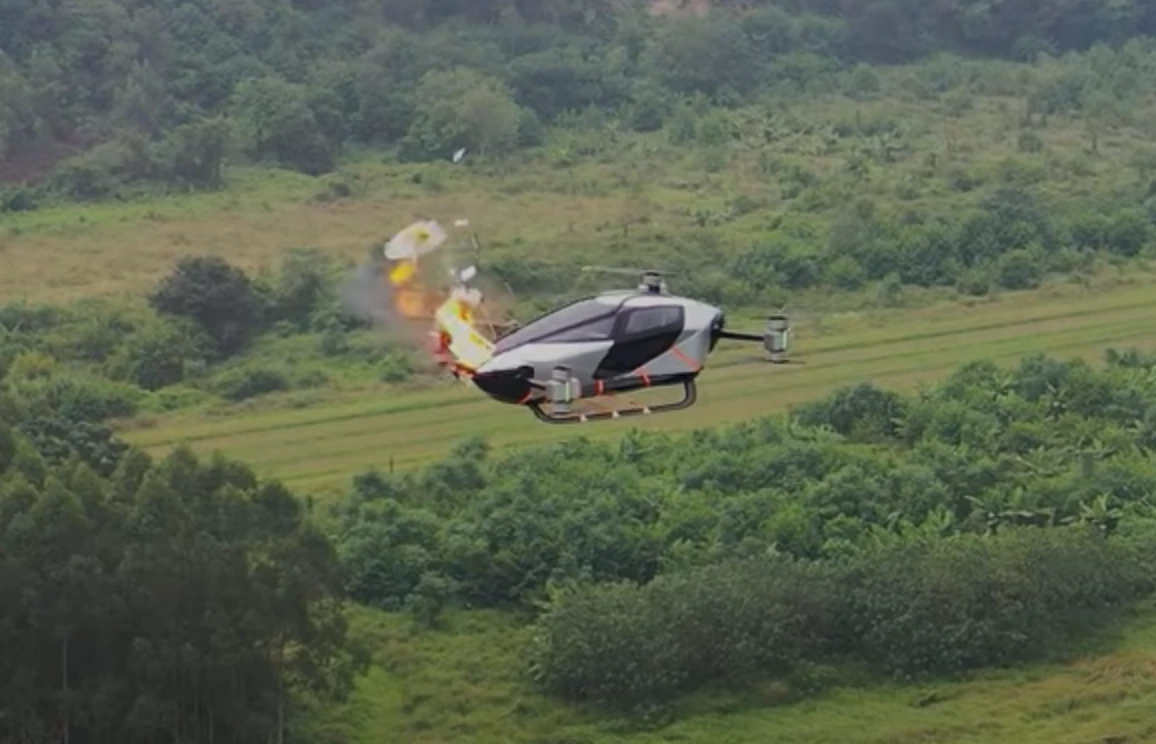What happens when something goes very wrong in an eVTOL aircraft? China's AeroHT has released video of its innovative low-altitude multi-parachute system turning a catastrophic propulsion system failure into a soft-ish landing from just 50 m (164 ft) up.
For many years, eVTOL aircraft manufacturers have been talking about using ballistic parachutes as a last-resort safety measure, and we've been wondering just how practical that kind of thing could possibly be from altitudes below about 100 m (328 ft), where such systems will have precious little time to deploy.
AeroHT has now answered that question, by releasing a video of its own multi-parachute safety system deploying from an X2 manned multicopter prototype at just 50 m off the ground. The chutes start grabbing air within about a second and a half of blasting out of the front of the aircraft, they're fully deployed by about a second and a half later, and they manage to catch the X2 before it flips over, and hold its descent to 5.2 m/sec (18.7 km/h, 11.6 mph) before it hits the ground.
You'll notice AeroHT has conveniently cut this video to remove what's presumably a fairly violent swing as the prop brings the aircraft's nose back up to level, as well as the moment when it smacks down onto the ground. The company says the aircraft wasn't damaged, and while it does very much seem like a survivable fall for any passengers on board, it sure won't be comfortable – that landing speed is equivalent to landing a 1.4-m (4.6-ft) high jump, with no visible suspension to soak up the spinal punch.
Still, according to Omni's Free Fall Calculator, an object dropped from 50 m up would ordinarily hit the ground 3.2 seconds later, at a speed around 31.3 m/sec (113 km/h, 70 mph). So while a catastrophic failure and parachute landing doesn't look like a lot of fun, I sure know which speed I'd rather hit the ground at.
We wish we could see an uncut version of this video; edits like this inherently make people suspicious of a company's claims. But it looks plausible enough to us, and we can imagine a company like this not particularly wanting potential buyers to see the cabin getting swung around in the air, or banging down on the ground. So we're willing to give AeroHT the benefit of the doubt on this one.

During the same presentation, at parent company Xpeng's Tech Day 2023, AeroHT also showed off a six-wheel-drive "aircraft carrier" van, as well as the latest version of its flying supercar.
Source: AeroHT







